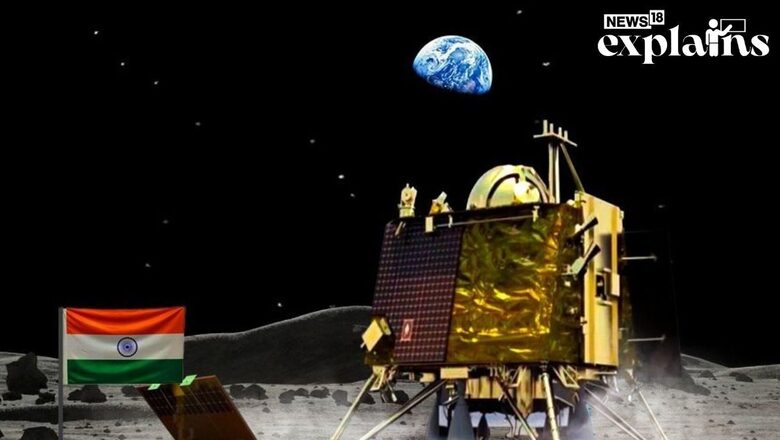
views
India made a history on Wednesday evening after the Chandrayaan-3 successfully landed in the southern polar region of the moon on Wednesday.
The Vikram lander successfully made a soft lunar landing on the Southern region of the Moon at around 6.04 pm on August 23, making India the first country to reach the uncharted region.
However, this is just a start for Chandrayaan-3 as the lander and the Rover will begin their explorations and send enormous data in the next two weeks.
Over to Rover
Lander Vikram made a touchdown on the lunar surface as per the schedule and the desired velocity. Two of the four engines were shut down to decrease the speed to the safe limits.
Four hours after the lander’s touchdown, the panel of Vikram will unfold, creating a ramp for the Pragyan rover. The rover Pragyan will emerge from the lander to the lunar surface and move at a speed of 1 cm per second.

The rover will use navigation cameras to scan the lunar surface and while rolling it will leave imprints of the tricolour and ISRO logo on the lunar soil. The rover is equipped with payloads to provide data related to the Moon surface.
Gather Data for Two Weeks
The Lander and the Rover carry a set of eight payloads to carry out several study and send back data about the lunar surface, the processes of lunar body and its formation.
The Lander and Rover will work under extreme terrain and temperatures to carry out mission objectives for one lunar day or 14 days on Earth. However, ISRO scientists said that there is a possibility that the lander and rover can operate beyond its mission duration of 14 days.
The Vikram lander, with its three payloads, will measure the near surface plasma density, carry out measurements of thermal properties of lunar surface, measure seismicity around the landing site and study lunar crust and mantle structure. This research is crucial for future exploration missions on moon, especially if humans are to stay on the Lunar Surface for extended periods or use it as a base for interplanetary travel.
The rover which will travel on the lunar surface will carry out in-situ experiments and study the elemental composition of the Moon’s atmosphere.
How Will Rover and Lander Communicate with ISRO
The rover will collect tonnes of data and send it to the lander which will then send it back to the ISRO.
Chandrayaan-3 has also established a contact with Chandrayaan-2 orbiter which can also be used as a contingency communication relay.




















Comments
0 comment